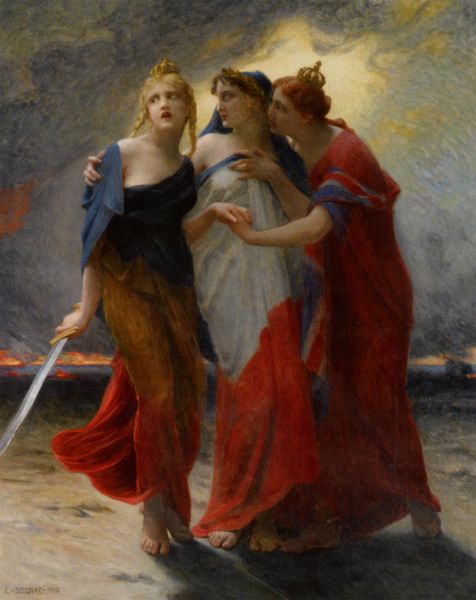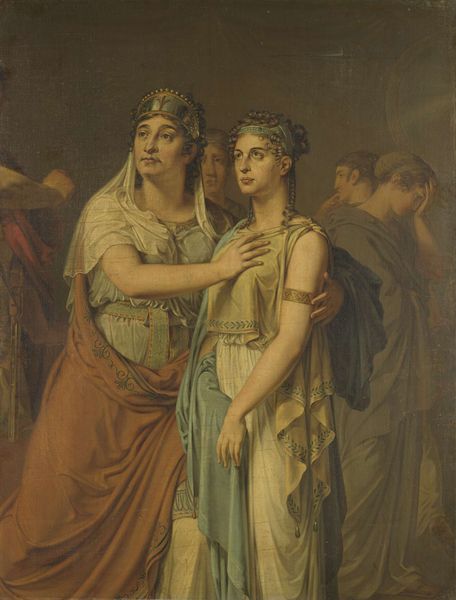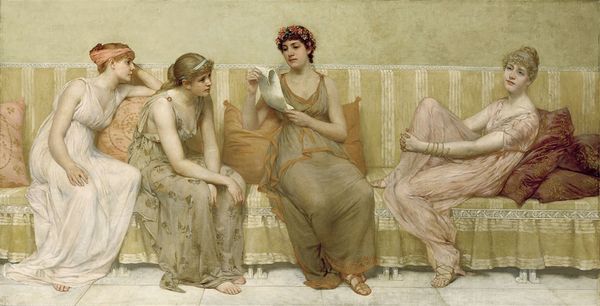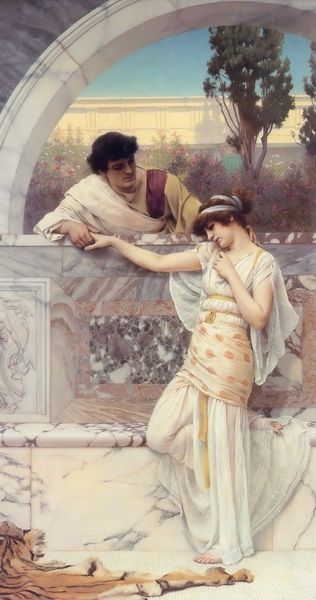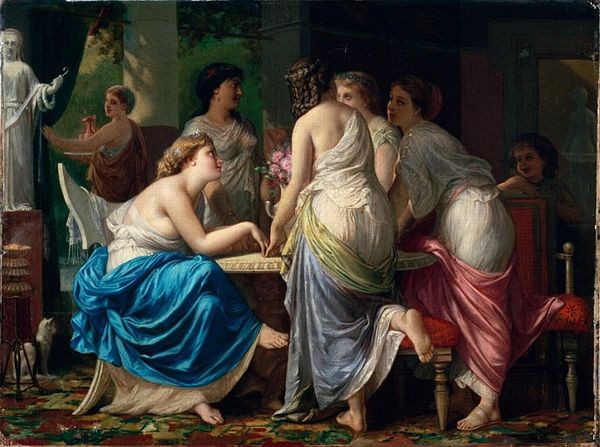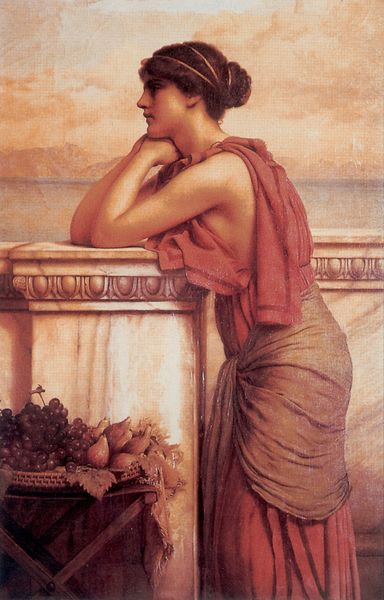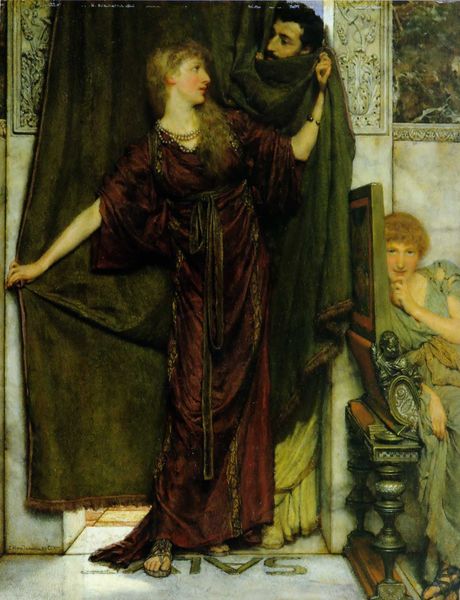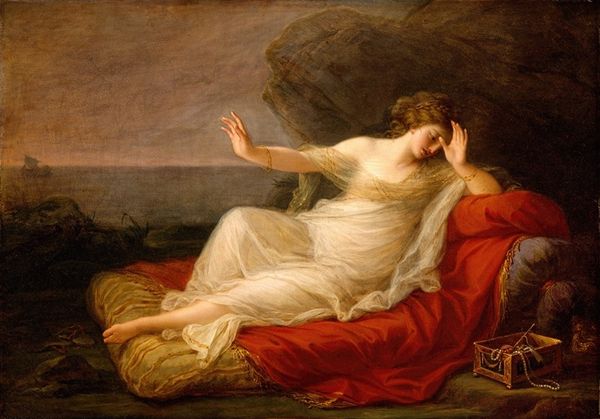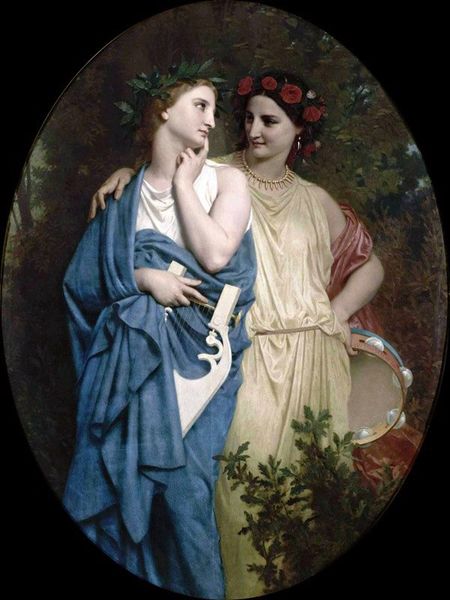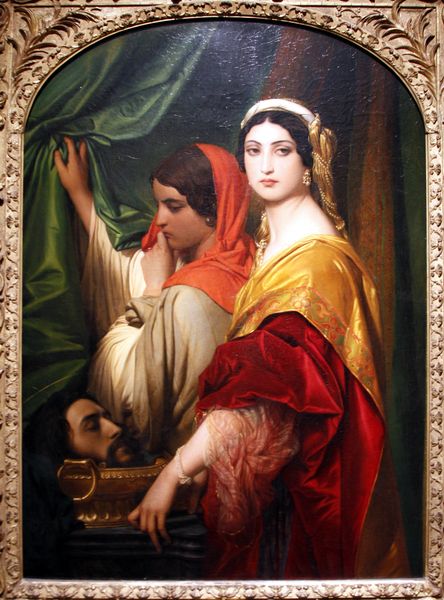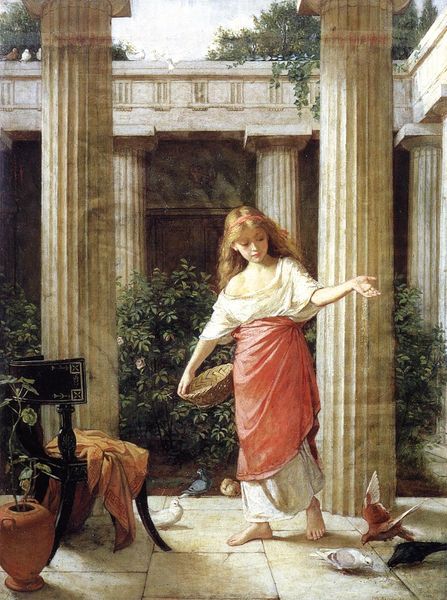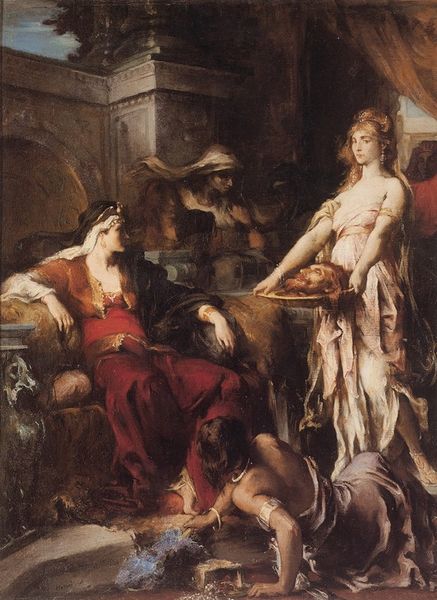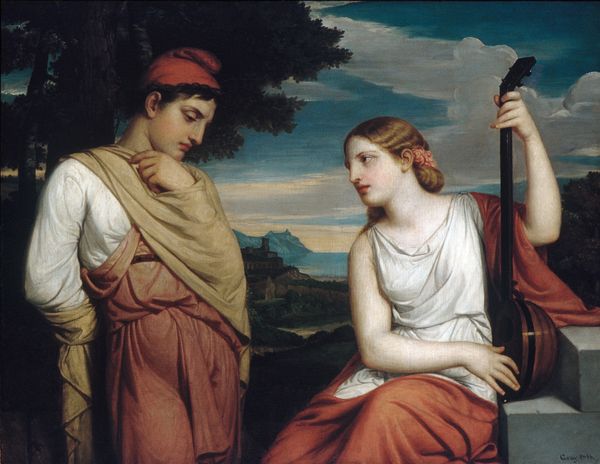
Dimensions: 108 x 200 cm
Copyright: Public domain
Curator: Looking at this work by William Bouguereau, entitled "Art and Literature," painted in 1867, what immediately strikes you? Editor: There’s a cool detachment, even an aloofness, in the way these figures are presented. The scale imbues a certain gravity. It feels grand, yet strangely impersonal. Curator: Indeed. The painting employs neoclassical ideals, which valued reason and order. Observe how the figures are posed—the clarity of line, the smooth modeling of forms, and the calculated arrangement of colors—all indicative of Academic art. Bouguereau’s commitment to idealism renders this in a historical allegorical mode. Editor: Yet, it’s interesting to consider how that idealism reinforces specific social values. These aren't just allegories of Art and Literature; they are idealized white, possibly Grecian, women. What message does it send when only certain figures are deemed worthy of immortalization through art? And Literature? Curator: Precisely. Consider the semiotic weight of the lyre held by the standing figure; its presence situates literature squarely within a Western tradition. The palette at the feet of the seated woman and the architectural references in the backdrop serve as signs, guiding us towards specific cultural interpretations and cementing them to classical ideals. Editor: Absolutely. Moreover, we should address the subtle male gaze. Notice how the seated figure, presumably ‘Art’ with the palette, gazes directly out at the viewer, almost inviting scrutiny while Literature stands by passively, slightly averted. It subtly underscores the expected active/passive gender roles in artistic and literary production. Curator: Bouguereau’s superb technique creates a polished surface, eliminating almost any trace of the artist's hand. This smoothness and symmetry invite quiet contemplation and celebrate order. Editor: True, but such smoothness and elevated ideals often obscure the realities of a culture. I think this aesthetic promotes exclusivity, doesn’t it? One wonders what voices are systematically excluded to maintain this pristine image. What possibilities open when the canon admits varied forms of expression? Curator: I concede your perspective, in looking deeply into Bouguereau's "Art and Literature," our divergent vantage points illuminated layers beyond initial aesthetic beauty, both intended and otherwise. Editor: Agreed. Examining historical context alongside the technical components has, as always, enriched our perception of its resonance in our evolving cultural landscape.
Comments
No comments
Be the first to comment and join the conversation on the ultimate creative platform.
